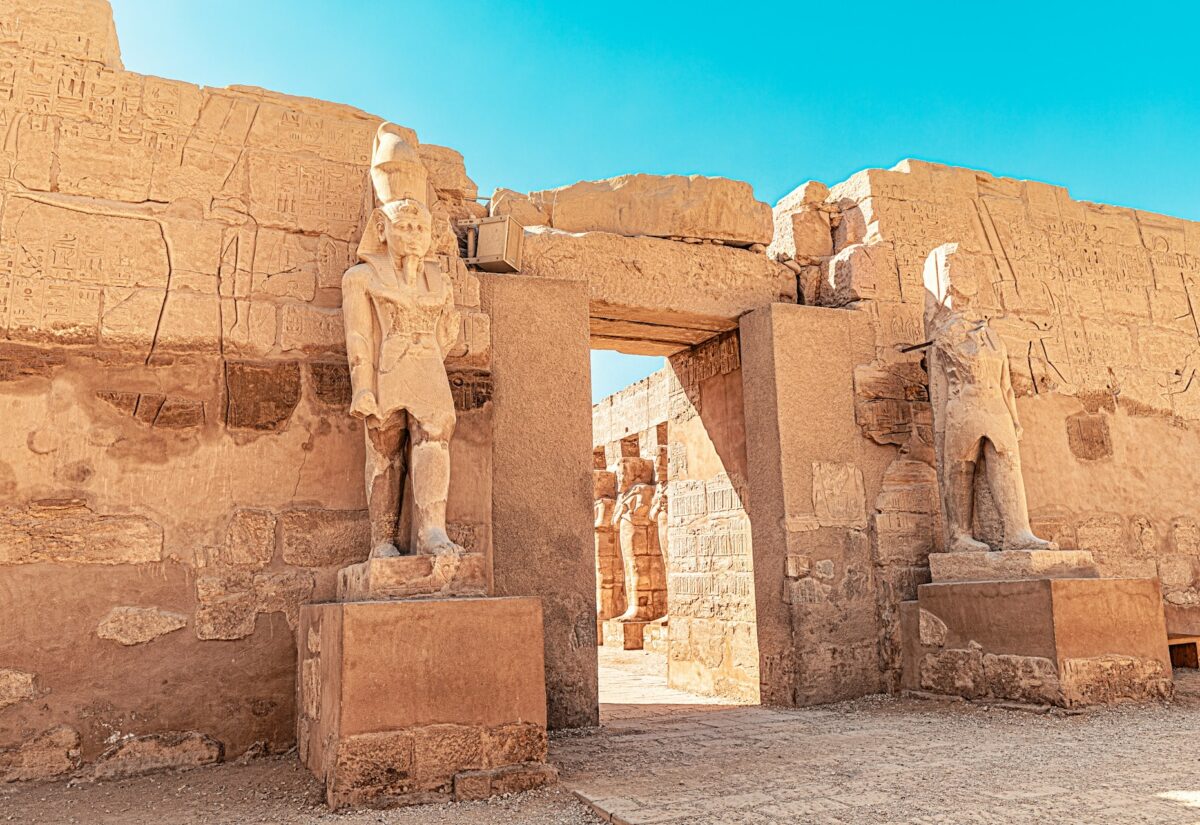Strangest Items People Have Been Buried With Throughout History
- Jennifer Still
- May 19, 2025
 Unsplash/Getty
Unsplash/GettyBurial rituals offer a window into what people value most. Whether it’s preparing for the afterlife, honouring status, or simply following custom, grave goods have long told stories about the people who took them—and the societies they left behind. But while some items make perfect sense (weapons for warriors, jewellery for nobles), others are more curious. Across centuries and civilisations, people have been laid to rest with things that range from the deeply symbolic to the downright bizarre. Here are some of the strangest items people have been buried with throughout history.
A chariot (and the horses to pull it)
In Iron Age Europe, chariot burials were a show of power—but they weren’t always just symbolic. Archaeologists have uncovered graves where not only the chariot but the horses themselves were interred alongside their owner. A dramatic example is the Arras Culture burials in Yorkshire, where wheels, horses, and elaborate fittings were discovered underground.
These were not miniatures or tokens—these were full-sized, functional vehicles. It’s a level of grave preparation that suggests the deceased was expected to travel in style, even in death.
A mummified male organ
Egypt’s most infamous boy king, Tutankhamun, was buried with a staggering number of grave goods—but one of the more puzzling details is that his mummified body had an erect, erm, organ. This wasn’t a mistake. According to some scholars, it may have been a deliberate decision to help align him with the god Osiris or to send a political message about masculinity and divine power.
It’s just one of many unusual features of Tutankhamun’s famously overstuffed tomb, which also included board games, a lock of hair from his grandmother, and an iron dagger likely made from a meteorite. National Geographic explores many of the tomb’s oddities in more detail.
A prosthetic eye
In an ancient Iranian burial dating back around 5,000 years, archaeologists discovered a skeleton with a large, artificial eye still in place. Made of natural tar and animal fat, it had been carefully shaped and painted with gold threads to mimic capillaries.
Its size and ornate design suggest it was ceremonial rather than practical—but the fact it was buried with the person wearing it shows how deeply it was connected to their identity. The find was made at the Burnt City site, one of Iran’s most archaeologically rich settlements.
Terracotta warriors
The tomb of China’s First Emperor, Qin Shi Huang, is famous for the thousands of life-sized terracotta warriors buried with him to guard him in the afterlife. But the scale of the site is still shocking—more than 8,000 figures have been found so far, each with unique facial features, clothing, and weapons.
They weren’t placed in the tomb randomly, either—they’re arranged in battle formations, ready for a campaign in the next world. The Smithsonian provides excellent background on this archaeological wonder.
A ship
In Viking tradition, a boat wasn’t just for raiding—it was also a fitting send-off for a person of status. Ship burials involved laying the deceased inside a real ship (or a carved-out stone version), surrounded by grave goods like weapons, animals, and sometimes slaves.
One of the most well-known examples is the Oseberg ship burial in Norway, dating to around 834 CE. It included two women, a wealth of textiles and artefacts, and one of the best-preserved Viking ships ever discovered. The University of Oslo’s Museum of Cultural History offers a virtual look at the site.
A pyramid of severed hands
In a 3,600-year-old palace complex in Avaris, ancient Egypt, archaeologists discovered four pits filled with dismembered right hands. These pits were located in a ceremonial courtyard, leading researchers to believe the hands may have been trophies or offerings from battle.
What’s still unclear is whether the hands were buried with specific people or simply left as part of a funerary ritual. Either way, it’s one of the more grisly and mysterious burial customs discovered in the region.
Gambling dice
In Roman Britain, graves sometimes included dice, gaming boards, and other entertainment items—suggesting the afterlife might include a good bit of downtime. One set of dice found in a 4th-century burial was carved from bone and neatly packed alongside drinking vessels.
These weren’t symbolic items—they were used, worn, and personal. For some Romans, it seems the next world was expected to include the same leisure and luxury as this one.
Food—and lots of it
Across many cultures, it’s common to bury the dead with food offerings. But in some cases, the amount is extreme. In ancient China, entire feasts were buried, including pots of grain, meats, and wine. In one site, more than 100 clay vessels filled with food were uncovered.
This wasn’t just practical—these items were believed to nourish the deceased in the next world. The British Museum includes several of these containers in its collection, highlighting how lavish ancient Chinese tombs could be.
A beloved dog
In medieval Europe, pets were rarely buried with humans. But there are exceptions. One 12th-century grave in England contained the remains of a young woman buried with a small dog curled at her feet.
Archaeologists believe it was a pet, not a symbolic creature, and its presence suggests deep emotional significance. The inclusion of the animal may have gone against local burial norms, making it a quiet act of defiance—or a deeply personal tribute.
Musical instruments
Burials of musicians or music lovers across different cultures often include their instruments. In the Andes, panpipes and drums have been found alongside mummified bodies. In ancient Greece, lyres were sometimes laid with the deceased.
These items speak to how central music was to both identity and ritual. In some cases, the instruments were deliberately broken or damaged before burial, possibly to “kill” them so they could join their owner in the afterlife.



